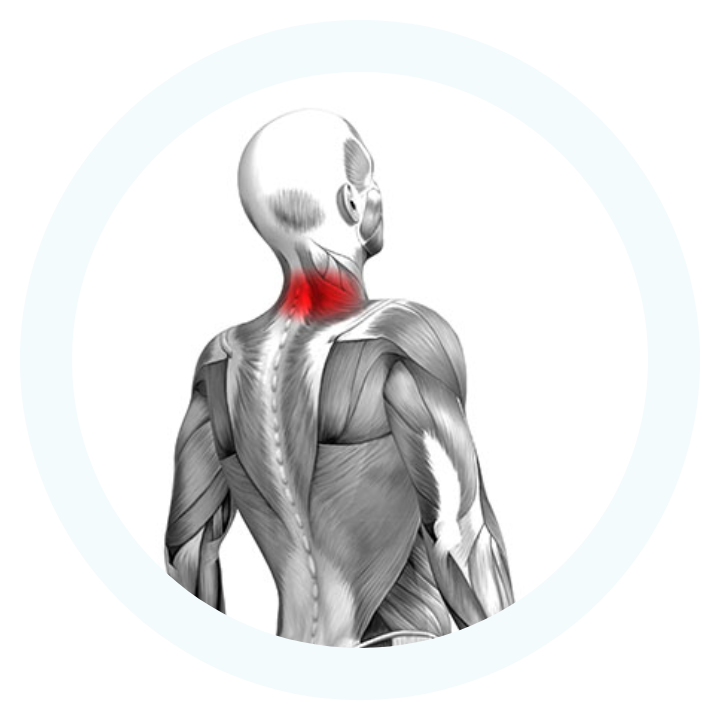Treatment for Neck Pain In Texas


Common Causes of Neck Pain
Diagnosing Neck Pain
Diagnosis of neck pain involves a comprehensive physical examination to assess pain, tenderness, and range of motion. Imaging tests such as X-rays, MRI, or CT scans may be used to identify the underlying cause. In some cases, nerve conduction studies or diagnostic injections may be necessary to pinpoint the source of pain.

Treatment Options for Neck Pain
Corticosteroid Injections: Injections of corticosteroids into the cervical facet joint to reduce inflammation and pain, providing relief for neck conditions.
Cervical Medial Branch Block: Medial branch blocks involve the injection of a local anesthetic near the medial branch nerves that supply the facet joints, providing pain relief and diagnostic information.
Cervical Radiofrequency Ablation (RFA): RFA uses heat generated by radio waves to destroy nerve fibers carrying pain signals from the affected area. It is commonly used to treat chronic neck pain from facet joint issues.
Cervical Epidural Steroid Injections: Epidural steroid injections deliver anti-inflammatory medication directly into the epidural space around the spinal nerves, reducing inflammation and pain associated with conditions like cervical radiculopathy.
Cervical Trigger Point Injection: Trigger point injections of anesthetic or corticosteroid into specific trigger points in muscles that cause neck pain, providing relief from neck pain.
Platelet-Rich Plasma (PRP) Injection: PRP therapy involves injecting a concentration of the patient's own platelets to promote healing and reduce pain in injured or degenerated neck tissues.
Platelet-Rich Plasma (PRP) Injection: PRP therapy involves injecting a concentration of the patient's own platelets to promote healing and reduce pain in injured or degenerated neck tissues.
Exosome Injections: Exosome injections deliver regenerative particles that can aid in the healing of damaged neck tissues, reducing pain and improving function.
Interventional Therapies
Medications
Ibuprofen, acetaminophen, and naproxen can help reduce pain and inflammation associated with neck conditions.
Anti-inflammatory drugs, muscle relaxants, and pain relievers may be prescribed for severe neck pain and inflammation.
Anti-Inflammatory Creams: Topical creams containing anti-inflammatory agents can be applied to the neck to reduce pain and swelling.
Exercise Programs: Tailored exercises to strengthen neck muscles, improve flexibility, and restore range of motion for various neck conditions.
Manual Therapy: Techniques such as massage and mobilization to relieve muscle tension, improve mobility, and reduce pain in the neck.
Acupuncture: Insertion of fine needles into specific points on the body to relieve pain and promote healing in the neck.
Chiropractic Care: Spinal adjustments and manipulations to improve alignment and reduce neck pain.
Chiropractic Care: Spinal adjustments and manipulations to improve alignment and reduce neck pain.
Massage Therapy: Techniques to reduce muscle tension, promote relaxation, and alleviate neck pain.
Transcutaneous Electrical Nerve Stimulation (TENs) Unit: A device that uses electrical currents to stimulate nerves and reduce pain in the neck.
Braces: Supportive braces can help stabilize the neck, reducing pain and preventing further injury.
Ultrasound Therapy: Use of sound waves to promote tissue healing and reduce inflammation in the neck.
Shockwave Therapy: A non-invasive treatment that uses shockwaves to stimulate healing and reduce pain in the neck.
Over-the-Counter Pain Relievers
Prescription Medications
Physical Therapy
Alternative Treatments
Conclusion
Neck pain can significantly impact your daily life, but with the right approach, it can be effectively managed. Understanding the cause of your neck pain and working with healthcare professionals to develop a personalized treatment plan can help you find relief and improve your quality of life. If you are struggling with persistent or severe neck pain, seek medical advice to explore your options for diagnosis and treatment.
